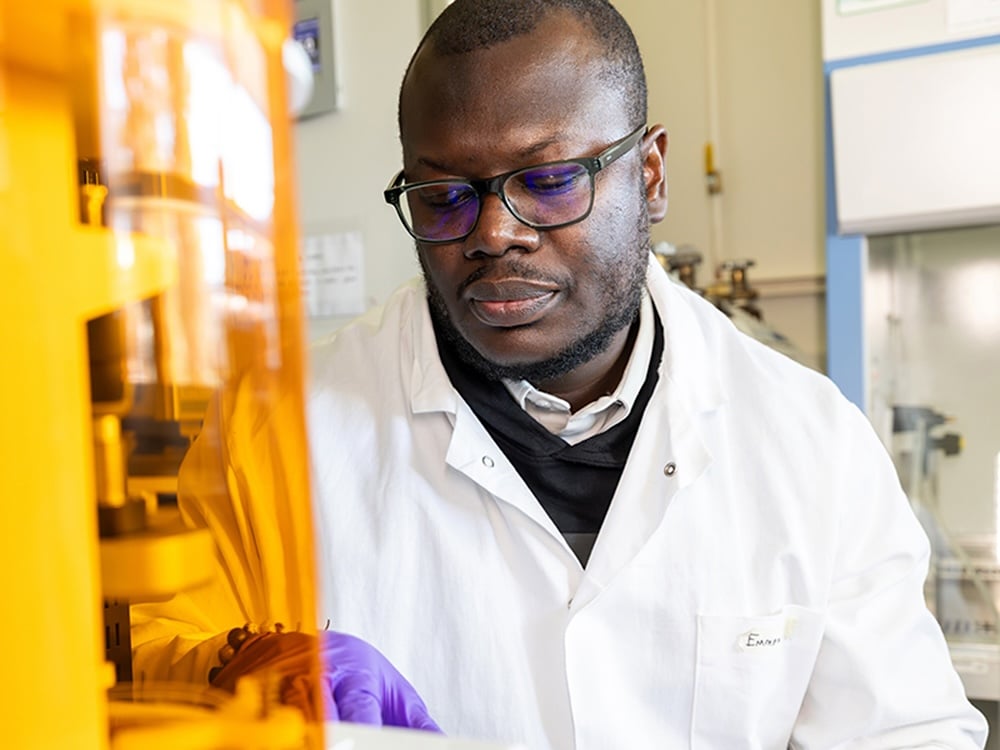Science
UBC Researchers 3D Print Lung Tissue and Test with Smoke

Researchers at the University of British Columbia (UBC) have developed a groundbreaking model of human lung tissue using 3D printing technology. This innovative approach allows for the simulation of lung responses to smoke, presenting a significant advancement in studying chronic diseases, particularly Chronic Obstructive Pulmonary Disease (COPD).
The team, led by Dr. Shazna N. Rahman, created a complex lung tissue model that closely mimics the functions of real human lungs. This model is not only capable of mimicking lung structures but also responds to harmful stimuli, such as smoke, that are known to affect lung health. The research, conducted in 2023, marks a key step forward in both regenerative medicine and disease modeling.
Innovative Approach to Lung Research
The UBC team’s 3D-printed lung model incorporates various cell types found in human lungs, including epithelial cells and immune cells. This diverse cellular composition enables researchers to observe how lung tissue reacts to environmental toxins, such as those found in cigarette smoke. The ability to replicate these responses provides a new platform for testing potential treatments for lung diseases.
According to Dr. Rahman, “This model allows us to study the effects of smoke exposure in a controlled environment, providing insights that traditional methodologies could not offer.” The model’s design facilitates the examination of cellular responses over extended periods, making it possible to observe the progression of disease states and the effectiveness of various therapeutic interventions.
Potential Impacts on Disease Treatment
The implications of this research extend far beyond academic interest. With the global burden of diseases like COPD rising, innovative solutions are urgently needed. According to the World Health Organization, COPD is projected to become the third leading cause of death worldwide by 2030. By utilizing this 3D-printed lung model, researchers aim to identify new therapeutic strategies that could alleviate symptoms and improve patient outcomes.
Additionally, the model can be adapted for use in drug testing, potentially reducing the reliance on animal models. This not only aligns with ethical considerations but also enhances the efficiency of drug development processes. As Dr. Rahman notes, “We are on the cusp of transforming how we study and treat lung diseases, paving the way for more effective therapies.”
The UBC researchers’ work exemplifies the potential of 3D printing technology in biomedical research. As advancements continue, the hope is that these models will lead to significant breakthroughs in the understanding and treatment of chronic lung diseases. The combination of innovation and practical application positions this research as a critical development in the field of respiratory health.
-

 Education2 months ago
Education2 months agoBrandon University’s Failed $5 Million Project Sparks Oversight Review
-

 Lifestyle3 months ago
Lifestyle3 months agoWinnipeg Celebrates Culinary Creativity During Le Burger Week 2025
-

 Science3 months ago
Science3 months agoMicrosoft Confirms U.S. Law Overrules Canadian Data Sovereignty
-

 Health3 months ago
Health3 months agoMontreal’s Groupe Marcelle Leads Canadian Cosmetic Industry Growth
-

 Science3 months ago
Science3 months agoTech Innovator Amandipp Singh Transforms Hiring for Disabled
-

 Technology3 months ago
Technology3 months agoDragon Ball: Sparking! Zero Launching on Switch and Switch 2 This November
-

 Education3 months ago
Education3 months agoRed River College Launches New Programs to Address Industry Needs
-

 Technology3 months ago
Technology3 months agoGoogle Pixel 10 Pro Fold Specs Unveiled Ahead of Launch
-

 Technology1 month ago
Technology1 month agoDiscord Faces Serious Security Breach Affecting Millions
-

 Business2 months ago
Business2 months agoRocket Lab Reports Strong Q2 2025 Revenue Growth and Future Plans
-

 Science3 months ago
Science3 months agoChina’s Wukong Spacesuit Sets New Standard for AI in Space
-

 Education3 months ago
Education3 months agoAlberta Teachers’ Strike: Potential Impacts on Students and Families
-

 Technology3 months ago
Technology3 months agoWorld of Warcraft Players Buzz Over 19-Quest Bee Challenge
-

 Business3 months ago
Business3 months agoNew Estimates Reveal ChatGPT-5 Energy Use Could Soar
-

 Business3 months ago
Business3 months agoDawson City Residents Rally Around Buy Canadian Movement
-

 Education3 months ago
Education3 months agoNew SĆIȺNEW̱ SṮEȽIṮḴEȽ Elementary Opens in Langford for 2025/2026 Year
-

 Technology1 month ago
Technology1 month agoHuawei MatePad 12X Redefines Tablet Experience for Professionals
-

 Technology3 months ago
Technology3 months agoFuture Entertainment Launches DDoD with Gameplay Trailer Showcase
-

 Business3 months ago
Business3 months agoBNA Brewing to Open New Bowling Alley in Downtown Penticton
-

 Technology3 months ago
Technology3 months agoInnovative 140W GaN Travel Adapter Combines Power and Convenience
-

 Technology3 months ago
Technology3 months agoGlobal Launch of Ragnarok M: Classic Set for September 3, 2025
-

 Science3 months ago
Science3 months agoXi Labs Innovates with New AI Operating System Set for 2025 Launch
-

 Technology3 months ago
Technology3 months agoNew IDR01 Smart Ring Offers Advanced Sports Tracking for $169
-

 Technology3 months ago
Technology3 months agoDiscover the Relaxing Charm of Tiny Bookshop: A Cozy Gaming Escape










